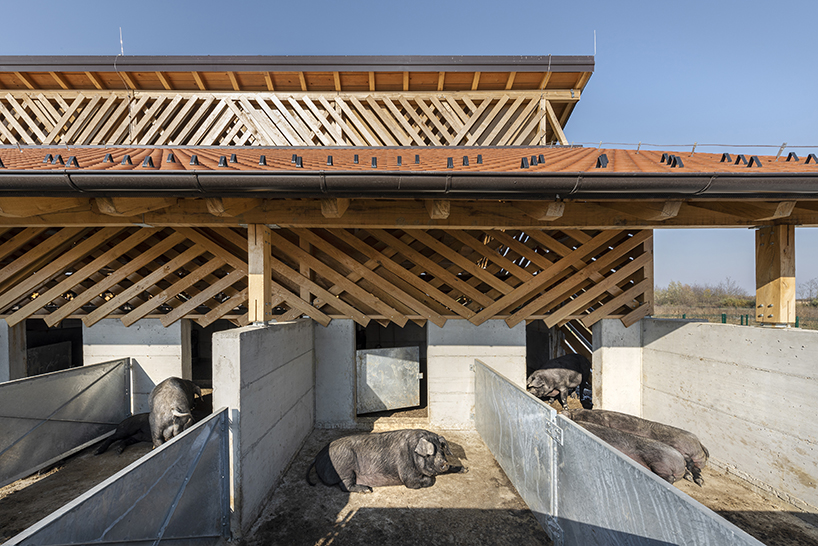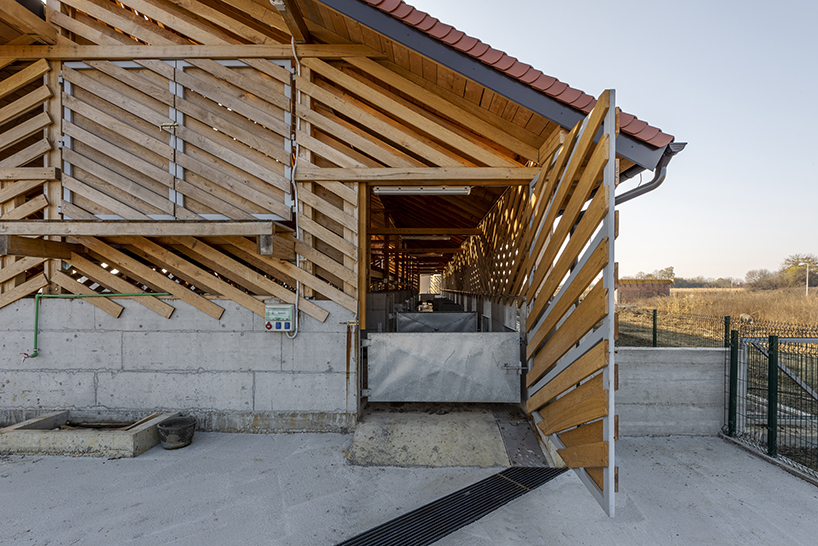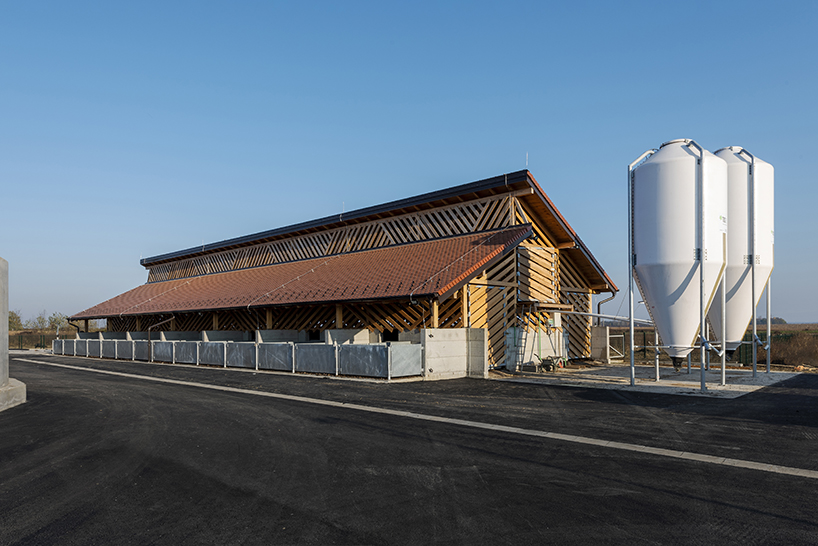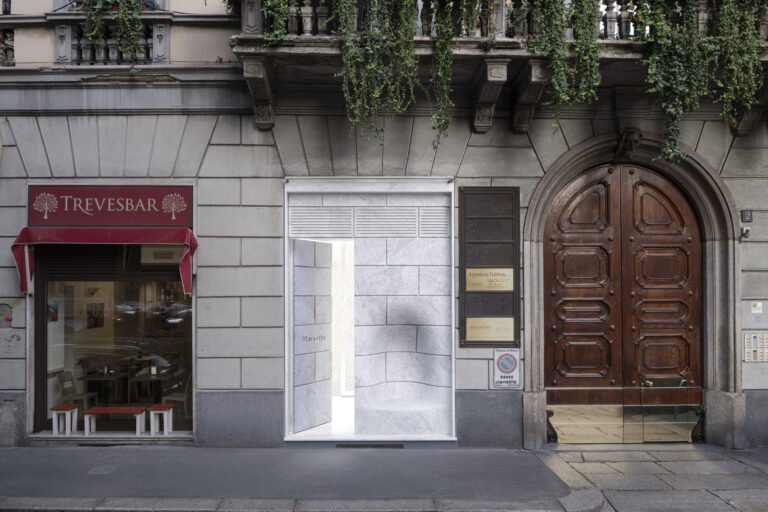SKROZ architecture’s eco pig farm in Croatia redefines common livestock spaces
an alternative eco-farm for the black Slavonian pig
Following the ‘chickenville’, an eco-friendly poultry farm in Croatia, Zagreb-based studio SKROZ architecture has completed an eco-farm for the black Slavonian pig — an autochthonous Croatian breed. The entire design is focused on the optimization of the breeding process and accommodation for the pigs, all the while taking into account both human and animal scales.
The final composition combines the rural Slavonian context with the traditional farm buildings, going one step further from the usual solutions that see a low-rise building with livestock spaces and a passage in the middle. Instead, the design team eliminated the central path and created an elevated gallery which, besides accessing the stalls, serves to store animal bedding and feed. Thus, the use of space is rationalized and the breeding process optimized while minimizing the disturbance of the pigs.

The structure primarily serves as ventilation and protection from the sun but also reinterprets the geometry of wooden façades on numerous vernacular buildings in Slavonia
All images © Bosnic+Dorotic
urban concept and organization
The brief was to design a farm according to the highest standards of organic livestock farming. Furthermore, the design team was also required to predict a potential farm expansion in case the capacity increases in the future. The stable would primarily be intended for year-round housing of sows (female pigs with piglets) with smaller outdoor pens, while the other pigs would stay in the stable only during the coldest part of the year. Given the needs of the pigs, a general disposition of the stables established itself near the western boundary line. this way, it avoids the county road on the eastern boundary and makes the most of the outdoor area for pigs.
Taking the aforementioned requirements into consideration, the final project consists of two identical complexes, each with a cross-section of the building’s maximum height on the central axis. The stables are positioned at an angle, which forms farmyards with a manure pit in the middle, allowing for smooth communication towards the pens and easier manipulation of service vehicles. Moreover, the need to transport the animal bedding has been eliminated, as it is planned to store it in the same building. Another key element of the project was the adaptability to various scenarios of use. The architects thus designed movable partitions that serve to decrease or enlarge the spaces depending on the needs of the animals. 
a traditional structure designed with contemporary touches
The pitched roof panes have been dislocated in the ridge, letting additional natural light enter in and ventilation run through the corridor. The extension of the roof pane formed an eave overhanging the outdoor area for the sows with their piglets. As for materiality, SKROZ architecture opted for resilient materials suitable for animals who are fond of rooting, digging, and biting. With this in mind, a concrete volume with galvanized steel partitions was picked for the base, on which the wooden structure rests, and finally, all is topped by the roof that uses traditional flat tiles. Apart from the bare function, the appearance of the buildings is informed by the context of the rural Slavonian region, which is visible in the roof geometry, the panes covering, the materials, and the method of treating the façade.
The permeability of the façade is not the result of the materials but is provided by its geometry. A series of wooden laths of local oak placed diagonally in two directions form a mesh of void and solid that defines the structure. With this reinterpretation of wooden façades geometry — found on numerous vernacular outbuildings in the area — the architects aimed to create efficient ventilation and protection from the sun, but also to connect contemporary standards with the region’s built heritage.

The sequence of wooden laths of Slavonian oak with interchangeable full and empty fields in two diagonal directions and two plans create a distinctive structure


